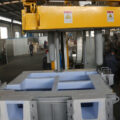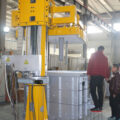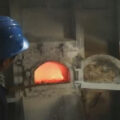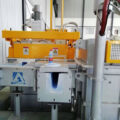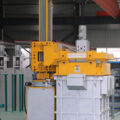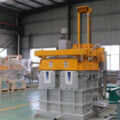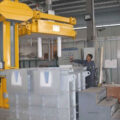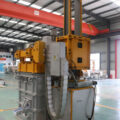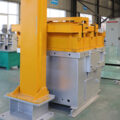Rotary degassing of molten aluminum alloys is a widely used commercial process to control the content of hydrogen, alkali metals, and inclusions in the melt before casting.
In today’s foundries, we recognize two major issues with molten metal quality: gas content and inclusions. When age-hardening alloys are developed, the presence of pores becomes more problematic because pores near the surface always blisters on the surface. In addition, it was found that as the porosity level increased, mechanical properties such as tensile strength were significantly lost.
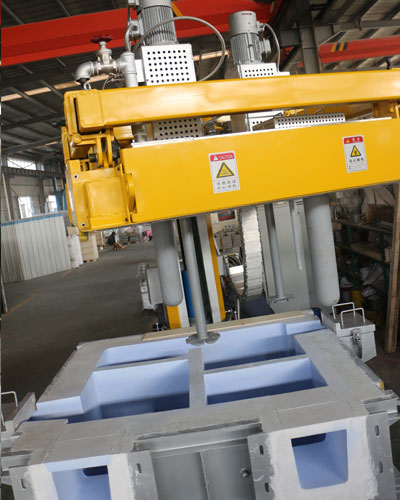
The rotary degasser is the most environmentally friendly, economical, and repeatable way to degas molten aluminum. It can provide low-cost and efficient operation for aluminum foundries.
The rotor in the rotating degassing unit sucks inert gas into the molten aluminum and pulverizes it into fine dispersed bubbles. The finely dispersed nitrogen bubbles are dispersed in the aluminum melt, intercepting dissolved hydrogen and inclusions and bringing them to the surface.
The hydrogen degassing of aluminum is based on the following principle: hydrogen will move from the high-pressure area in the melt to the low-pressure area in the inert gas. Hydrogen will be dispersed throughout the molten metal, just as hydrogen is released in any confined space. It will maintain a constant pressure throughout the melt.
The ability of hydrogen to move in liquid metal and balance its pressure is almost as fast as in air. Therefore, it is not necessary to contact all metals with inert gas. The degree and rate of degassing of thermite depends on two factors: the rate of transport across the metal/gas interface and the surface area of the gas exposed to the metal.
The principle of rotary degassing is to increase the surface area of the inert gas introduced into the molten aluminum. The larger the surface area of the inert bubbles, the faster the degassing. For a given gas volume, the smaller the bubble size, the larger the total surface area of the gas, and the faster the degassing.


